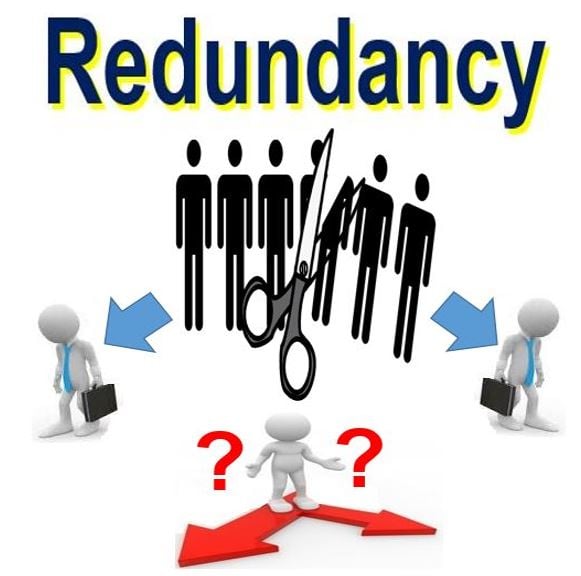Checking Out the Operational Dynamics of Company Redundancy and Its Long-Term Sustainability

Redundancy Approaches for Service Continuity
In order to guarantee continuous operations, services have to apply effective redundancy techniques for service connection. Redundancy in this context refers to the replication of crucial elements or features within a system to minimize the effect of prospective failures. By including redundancy methods, organizations can enhance their durability against disruptions triggered by different variables such as all-natural calamities, equipment failures, or cyber-attacks.
One common redundancy approach is the application of back-up systems and information storage options. This involves producing duplicates of vital information and systems that can be triggered in case of a key system failing. Additionally, organizations can establish repetitive communication channels and source of power to preserve connectivity and procedures during unanticipated events.
Moreover, cross-training employees to execute multiple roles within the company can work as a valuable redundancy strategy. This makes certain that crucial tasks can still be lugged out even if crucial employees are not available as a result of ailment or other factors. Generally, efficient redundancy strategies are vital for companies to maintain operational continuity and minimize the effect of potential disturbances.
Impact of Redundancy on Business Resilience
Provided the crucial duty redundancy techniques play in making certain company connection, exploring the effect of redundancy on business resilience becomes vital for comprehending the all natural operational characteristics of a business. Organizational durability describes an entity's capacity to adjust to disturbances, recover from setbacks, and transform when required while keeping core functions. Redundancy, when strategically applied, can dramatically add to enhancing a company's resilience despite unanticipated difficulties. By having back-up systems, employees, or processes in position, firms can much better stand up to shocks and proceed procedures with marginal disturbance.
In addition, redundancy can strengthen worker morale and confidence, recognizing that there are contingency strategies in location to attend to unpredicted circumstances. This sense of safety can cause raised productivity and a much more positive job environment. Additionally, redundancy can cultivate technology and imagination within an organization as workers feel empowered to take computed dangers, recognizing that there is a safeguard to sustain them in instance of failure. In general, the influence of redundancy on organizational strength is extensive, shaping the lasting sustainability and success of a company.
Balancing Performance and Flexibility in Redundancy
Accomplishing an unified balance in between operational efficiency and straight from the source adaptive versatility is a pivotal obstacle in the calculated implementation of redundancy within organizations. As well much adaptability without a strong operational structure can result in inefficiencies and her explanation variance.
To balance performance and adaptability in redundancy preparation, organizations should carefully examine their operational demands, market characteristics, and tactical objectives. Ultimately, discovering the appropriate equilibrium between performance and flexibility is essential for developing a resilient and lasting organization in the face of uncertainty.
Long-Term Sustainability Through Redundancy Preparation
To make sure enduring viability and security, companies have to strategically align their redundancy planning with lasting sustainability objectives, thus balancing operational performance with adaptive adaptability. Lasting sustainability via redundancy preparation includes greater than simply short-term cost-cutting measures. It calls for a comprehensive critical method that anticipates future challenges and opportunities. Companies should watch redundancy not as view it a reactive option to instant troubles yet as a positive strategy for long-term success. By integrating redundancy planning with sustainability goals, companies can develop a durable framework that can hold up against numerous market changes and interior modifications.

Proactive Actions for Lasting Business Operations
Exactly how can companies proactively boost their functional sustainability for long-term success? Applying proactive measures is crucial for companies aiming to ensure sustainable procedures. One essential method is to purchase innovation and technology to streamline procedures, decrease waste, and stay affordable in the market. Embracing sustainable techniques such as reducing energy intake, lessening carbon footprint, and maximizing source usage can not only benefit the setting but likewise bring about set you back savings in the future.
In addition, cultivating a culture of constant improvement and understanding within the organization can boost adaptability to altering market problems and client demands. Encouraging staff member involvement in decision-making processes and supplying possibilities for professional growth can improve morale, performance, and general performance. Developing clear objectives, keeping an eye on vital performance indicators, and consistently examining progression are crucial elements of proactive sustainability management.
Working together with providers, customers, and various other stakeholders to advertise lasting methods throughout the supply chain can create a causal sequence of favorable influence - redundancy pay if company goes bust. By taking positive actions towards functional sustainability, companies can develop strength, drive technology, and secure their lasting success in an ever-evolving company landscape
Final Thought

In the world of organizational management, the critical release of firm redundancy stands as a pivotal yet detailed method that necessitates a fragile equilibrium in between functional efficiency and lasting feasibility. By dissecting the operational dynamics that underpin company redundancy and examining its broader ramifications for organizational resilience and adaptability, a nuanced understanding of how redundancy methods can form the future trajectory of a business begins to unravel.Given the essential role redundancy techniques play in making sure organization continuity, checking out the impact of redundancy on business durability ends up being essential for understanding the alternative operational characteristics of a company. On the whole, the influence of redundancy on business resilience is profound, shaping the long-lasting sustainability and success of a business.
In final thought, comprehending the operational dynamics of business redundancy is important for guaranteeing long-term sustainability.